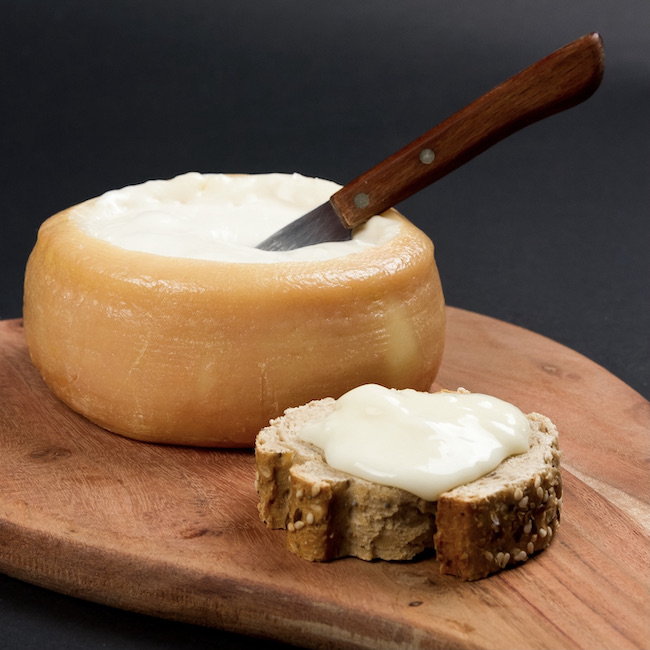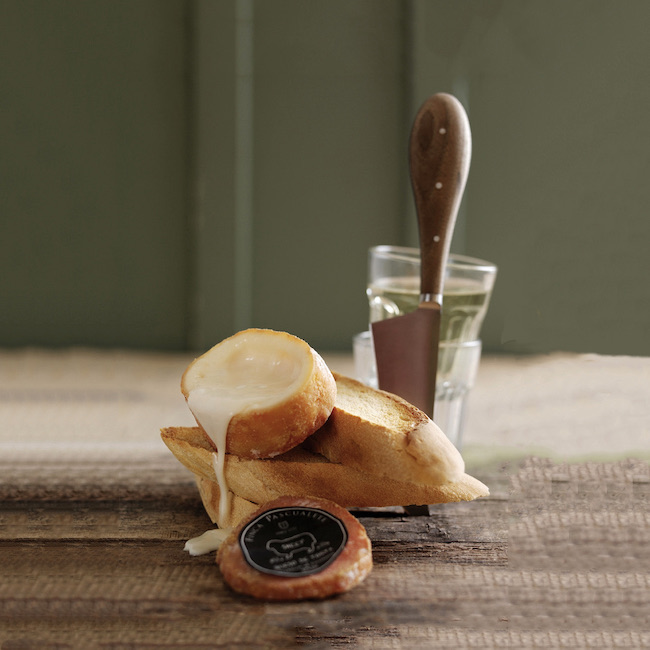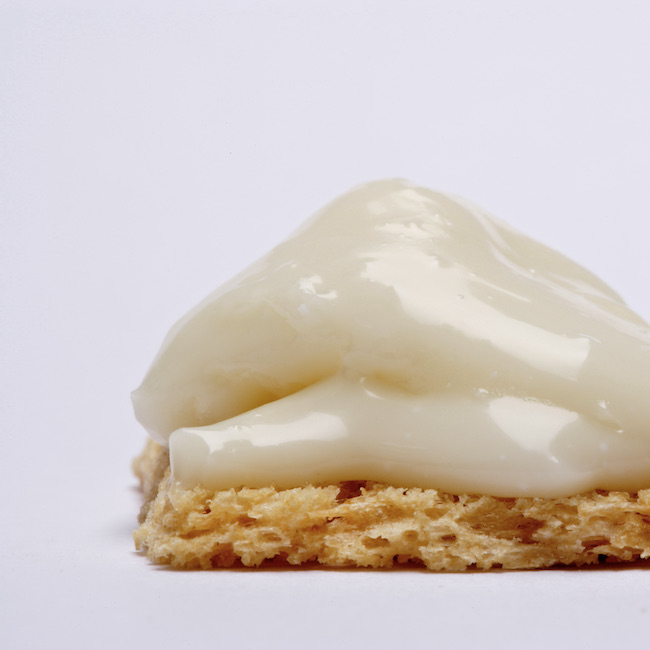- by Susan Sherrill Axelrod, editor-in-chief of culture: the word on cheese magazine and Culture Media - @susanspoon
.png.transform/rendition-xs/image_image%20(1).png)
Creamy, intense and unique: this cheese from Extremadura is one of a kind. This is its story and the different variations that can be found

- by Susan Sherrill Axelrod, editor-in-chief of culture: the word on cheese magazine and Culture Media - @susanspoon
Torta-style cheeses are among the most unusual cheeses in Spain and perhaps even the world. Native to Extremadura, a region in Western Spain near the border with Portugal, these cheeses are made exclusively with raw sheep milk. The name comes from their shape, a rounded disc that resembles a cake (torta in Spanish) more than a traditional wheel of cheese. Tortas have a thin, pliable rind that encases a soft, creamy center; the traditional way to enjoy these cheeses is to slice off the top and dig in with a spoon. They are one of the few cheeses made with thistle rennet, which helps to create their pudding-like consistency and adds a distinctive herbal tang.
Compared to other Spanish cheeses, tortas are relatively new, having been produced for about 100 years. According to the regulatory consortium for Torta del Casar PDO (the only one of these cheeses that, following a years-long legal battle, can use “torta” on its label), the region’s rocky soil is unsuitable for growing crops but is ideal for grazing sheep, which were originally raised for their wool. When the value of wool declined, sheep ranchers turned to milking and cheesemaking. Local lore has it that cardoon thistle (called artichoke thistle in the U.S.) somehow fell into a milk vat, and the torta was born.
The process of making the cheese remains much the same today. After the milk is coagulated with the thistle rennet, the curd is cut with wires into rice-sized pieces, put into molds and pressed. The tiny curd size is among the unusual characteristics of torta-style cheeses. Curds for soft cheeses are usually left larger to retain more of the whey, but due to the thistle rennet, these cheeses stay creamy. Once the wheels are unmolded, they are wrapped with cloth to support the developing rind during the 60-day aging process, when the cheese is turned every day to keep its shape.

Variations on the torta
“It's an extremely complex cheese—labor intensive and delicate,” says Juan Figueroa, who produces a torta-style cheese on his family’s farm, Finca Pascualete, in Cáceres—the birthplace of the torta. Like many farmers in the area, Figueroa’s family, who have farmed their land since 1232, had historically made sheep’s milk cheese, but only for their own consumption. “We saw the (Torta del Casar) PDO growing, so for about six years we sold milk to the PDO while learning every step of making the cheese,” Figueroa says. “The reason why we decided to step out as a cheesemaker was that you weren’t allowed to change the size or the recipe. We are vertically integrated in this business, and we always said it would be better to create our brand than to be part of the PDO.”
Retorta and Retorta Mini are now two of the six sheep’s milk cheeses produced at Finca Pascualete. “In a slangy way, retorta means ‘linen cloth,’ and it also means ‘even more,’ says Figueroa. The milk comes from the farm’s herd of Marino and Lacaune sheep, which is mixed to give the cheese a milder flavor. Cardoon thistle, harvested on the farm, is put in a linen cloth bag and soaked in water overnight, then the water is added to the milk. The molded cheese is lightly salt brined before going into a cellar “with a very low temperature and the highest possible humidity” for three weeks. After 10 days, a cloth band is wrapped around the cheese to help it keep its shape. It spends a month in a second cellar and 15 days in a third and final cellar—each with a different balance of temperature and humidity. “We wanted to do something with tradition, that’s old, the best we can,” says Figueroa. “There are a million little things that can go wrong.” But Finca Pascualete is clearly doing something right. In 2011, the first year Retorta was produced, it won the Best Spanish Cheese at the World Cheese Awards.

Other torta-style cheeses to know
The only one of these cheeses allowed by law to use “torta” on its label is made by just six producers in the province of Cáceres, using the mixed raw milk of Extrafina and Merino sheep. Production of Torta del Casar PDO is strictly governed by a consortium, and the cheese also bears the red and gold stamp that designates a Protected Designation of Origin by the EU, meaning that it can only be made in a certain place by time-honored methods.
Only the milk of Merino sheep is used to make Queso de la Serena PDO, which is produced in the province of Badajoz by 18 creameries. The cheeses are salted by hand and aged on wooden boards, and some brands are wrapped with a lace band before they are packaged for sale. The production of this cheese is also governed by a consortium.
Quesería Tierra de Barros produces several different torta-style cheeses at its facility in Villafranca de los Barros in Badajoz. All are made with the raw milk from Merino sheep and crossbreeds, and the flavors are more intense than those of Torta del Casar or Queso de la Serena. Semicurado de Barros spends an extra month in the cellar; Añejo de Barros is aged for an additional three months and vacuum packed in extra virgin olive oil; and Tortita de Barros is made with goat’s milk.
Cañarejal Cremoso differs from all the others in that it is made outside of Extremadura in Valladolid, the capital city of Castile-León, and also because its rind is more like that of a brie or camembert than a traditional torta. One of several cheeses made by the Santos family, it starts with raw sheep milk and thistle rennet, but then penicillium camemberti is added to the vat, which creates its distinctive white rind and mushroomy flavor.
